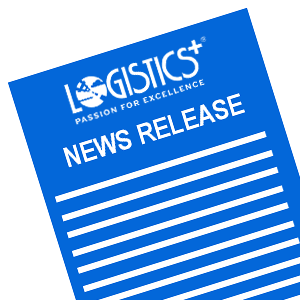
by logisticsplus | Jun 22, 2017 | News
FOR IMMEDIATE RELEASE
Logistics Plus Receives 2017 Supply & Demand Chain Executive SDCE 100 Top Supply Chain Projects Award
Cargo project involving the safe delivery of 200-ton stator from Poland to Turkey earns award for second consecutive year
 ERIE, Pa. (June 22, 2017) – Logistics Plus Inc., a leading worldwide provider of transportation, logistics and supply chain solutions, is proud to announce – for the second consecutive year – it has been selected by Supply & Demand Chain Executive, the executive’s user manual for successful supply and demand chain transformation, as a recipient of an “SDCE 100” Top Supply Chain Projects Award.
ERIE, Pa. (June 22, 2017) – Logistics Plus Inc., a leading worldwide provider of transportation, logistics and supply chain solutions, is proud to announce – for the second consecutive year – it has been selected by Supply & Demand Chain Executive, the executive’s user manual for successful supply and demand chain transformation, as a recipient of an “SDCE 100” Top Supply Chain Projects Award.
The SDCE 100 is an annual list of 100 great supply chain projects. These projects can serve as a map for supply chain executives who are looking for new opportunities to drive improvement in their own operations. These projects show how logistics providers help their customers and clients achieve supply chain excellence and prepare their supply chains for success. The supply chain project submitted by Logistics Plus that earned this year’s recognition involved the safe delivery of a 200-ton stator (the stationary portion of an electric generator) from Gdynia, Poland to a Yatagan Thermal Power Plant in Mugla, Turkey on behalf of a Fortune 500 power and energy company.
“Our goal with 2017’s Top 100 is to shine the spotlight on successful and innovative transformation projects that deliver bottom-line value to small, medium and large enterprises across the supply chain,” says Ronnie Garrett, editor of Supply & Demand Chain Executive. “The selected projects can serve as a roadmap for supply chain executives looking for new opportunities to drive improvement in their own operations. We congratulate all of our winners for a job well done!”
“This is another validation that our project cargo experts are among the best in the business,” said Jim Berlin, founder and CEO of Logistics Plus. “We handle many cool logistics projects for major companies all around the world, every day. As we like to say, when it comes to big, bad or ugly cargo projects, that’s where we’re at our best. As you can imagine, moving a 200-ton piece of equipment takes great planning and flawless execution. Our LP Turkey Division was the lead on this project, and they delivered for us, and our customer, yet again.”
About Supply & Demand Chain Executive
Supply & Demand Chain Executive is the executive’s user manual for successful supply and demand chain transformation, utilizing hard-hitting analysis, viewpoints, and unbiased case studies to steer executives and supply management professionals through the complicated, yet critical, world of supply and demand chain enablement to gain competitive advantage. Visit them on the web at www.SDCExec.com.
About Logistics Plus Inc.
Logistics Plus Inc. provides freight transportation, warehousing, global logistics, and supply chain management solutions through a worldwide network of talented and caring professionals. Founded in Erie, PA by local entrepreneur, Jim Berlin, 20 years ago, Logistics Plus is a fast-growing and award-winning transportation and logistics company. With a strong passion for excellence, its 400+ employees put the “Plus” in logistics by doing the big things properly, and the countless little things, that together ensure complete customer satisfaction and success.
The Logistics Plus® network includes offices located in Erie, PA; Alma, AR; Little Rock, AR; Los Angeles, CA; Riverside, CA; San Francisco, CA; Visalia, CA; Atlanta, GA; Chicago, IL; Detroit, MI; Kansas City, MO; Charlotte, NC; Lexington, NC; Buffalo, NY; Cleveland, OH; Charleston, SC; Greenville, SC; Nashville, TN; Dallas, TX; Fort Worth, TX; Houston, TX; Laredo, TX; Madison, WI; Australia; Bahrain; Belgium; Canada; Chile; China; Colombia; Egypt; France; Germany; Hong Kong; India; Indonesia; Kazakhstan; Kenya; Libya; Mexico; Poland; Saudi Arabia; Singapore; South Sudan; Taiwan; Turkey; UAE; and Uganda; with additional agents around the world. For more information, visit www.logisticsplus.com or follow @LogisticsPlus on Twitter.
Media Contact:
Scott G. Frederick
Vice President, Marketing
Logistics Plus Inc.
(814) 240-6881
scott.frederick@logisticsplus.com
Click image below to download the Logistics Plus logo:


by logisticsplus | Jun 21, 2017 | News
Where is Erie going and who will take it there? In its annual “40 Under 40” feature, the Erie Reader seeks to answer these questions, giving a face to the present as we face an uncertain future. Whether it’s making a difference one-on-one in a classroom setting or lobbying for change on a national level, these electees prove that, yes, success can (and does) happen here. These are passionate individuals intensely dedicated to their crafts, trades, and causes, working hard to rewrite our narrative and reroute our course.
Congratulations to Matt Reichert, Manager of Operations and General Counsel for Logistics Plus Linguistic Solutions, on being named to Erie’s 40 Under 40 list! Read the full article online using the link below (Matt’s profile is on page 20).
http://www.eriereader.com/uploads/issues/14979_Erie%20Reader_June21_2017_Reg_Quality.pdf


by logisticsplus | Jun 13, 2017 | News
 A life lesson in how to always say YES, regardless if it is “your job” or not and what friends are made of.
A life lesson in how to always say YES, regardless if it is “your job” or not and what friends are made of.
It was your usual beautiful Charleston morning and I was starting my daily routine of getting up, feeding the dogs and getting that first hot cup of coffee to start my morning before sitting down to watch the news. This was how I started every day, little did I know that today was no ordinary day. Today was the day I would walk out of my bedroom and be greeted by a snake in my living room. Apparently he too was just as surprised as I was when my 2 German Shepherds and I crossed his path. Curled up in front of the bookcase as if he had been invited for a hot cup of Joe, I didn’t even notice him till the dogs stopped to see what was on the floor and I saw strange striking movement from around their feet.
Please keep in mind that I have only been awake for 60 seconds, so my reflexes are not quite cat like yet and my 10 year old prescription eye glasses aren’t up to sniper regulations. Even though I am a good ole southern girl, I still haven’t ever had to even give one moment of thought about what to do if you find yourself face to face with a poisonous snake IN YOUR HOUSE at 5:30 in the morning. I feel I was pretty impressive with my banshee like screams to get the dogs away in an effort to see what was on the floor and to be able to make an assessment what was going on. I flipped on the lights and see this snake looking back at me. Great. Now what? They never covered this while I was in college. The class on snake removal must have been an elective I missed.
Now that I am very awake, I remember the large mixing bowl sitting in the drying rack that I used to mix the salad in the night before. I grabbed it. Thinking every good Knight or even a damsel in distress needs a good long jousting lance, mine is now the broom that I grabbed next. This creature will not get away from me so easily. I place the bowl at the end of the broom and try to cover the snake while extending as far as I dare without losing balance and sending the snake scattering for cover. Luckily I was able to capture the uninvited guest.
With the weight of 15 large hardback books on top of the bowl, I am able to take a breath and say, once again, now what? This is where you call upon your friends. Who better to prove themselves as a true friend than one that will pick up the phone on a Tuesday morning before 6 AM? I called a family friend who owned his own business, granted it was a Termite exterminating business, but I was in dire need of an “exterminator” and thought this would be the answer to my dilemma. He had never been asked to remove a snake in all of his years of operating his business, but thankfully NO was not in his vocabulary.
Shortly after 8:30 AM, I was answering the door to find 2 nice gentlemen dressed in their Termite Exterminator shirts coming into my house to help me with a snake removal. They never hesitated to take on the challenge and together we all managed to get the snake outside and into a large bucket safely (thanks Home Depot for the great bucket). The gentlemen rode off with the snake into the sunrise while I waved goodbye and gave thanks for friends who answer the phone and for the average guy who will go out of their way to help even though it wasn’t their job.
Thank you,
Kimberly D. Marchand, LCB
Branch Manager
Logistics Plus Charleston
1605 Central Ave.
Suite 6, # 247
Summerville, SC 29483 USA
Office: 814.746.4675
Mobile: 843.568.3381
Fax: 814.217.0500
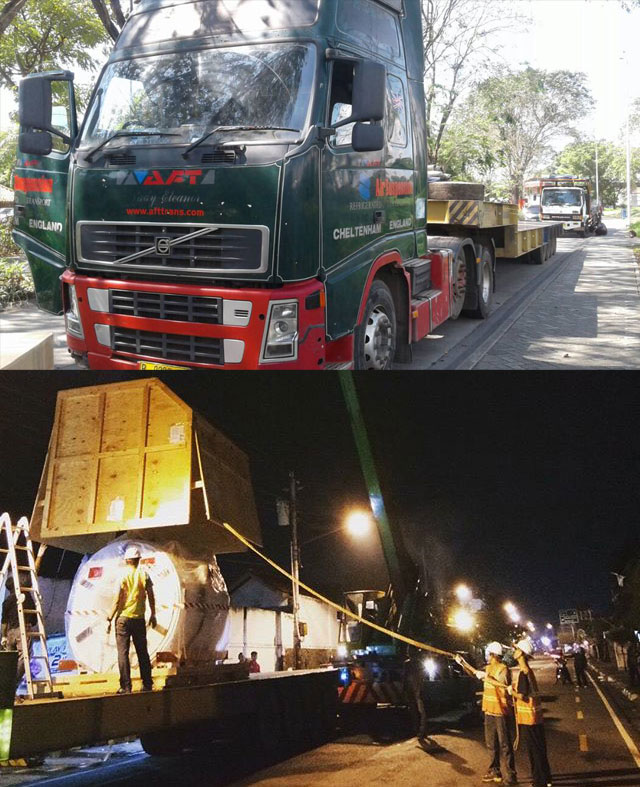
by logisticsplus | Jun 9, 2017 | News
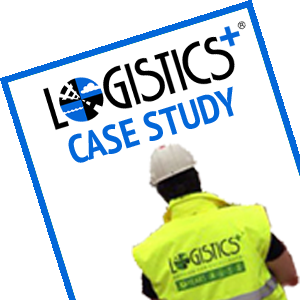 Thanks to Ricky and Tatum from the Logistics Plus Indonesia project cargo team. Logistics Plus Indonesia handled the transport of MRI equipment from Airport/warehouse to the hospital project site. The project included unpacking and moving MRI equipment into the room so it was ready for final installation. Most of the time, the LP project cargo crew worked through the night when the hospital was not busy or crowded. The MRI equipment had to be transported with air ride low bed trailer. Visit our Project Cargo Portfolio page to download a PDF of this project and many others!
Thanks to Ricky and Tatum from the Logistics Plus Indonesia project cargo team. Logistics Plus Indonesia handled the transport of MRI equipment from Airport/warehouse to the hospital project site. The project included unpacking and moving MRI equipment into the room so it was ready for final installation. Most of the time, the LP project cargo crew worked through the night when the hospital was not busy or crowded. The MRI equipment had to be transported with air ride low bed trailer. Visit our Project Cargo Portfolio page to download a PDF of this project and many others!
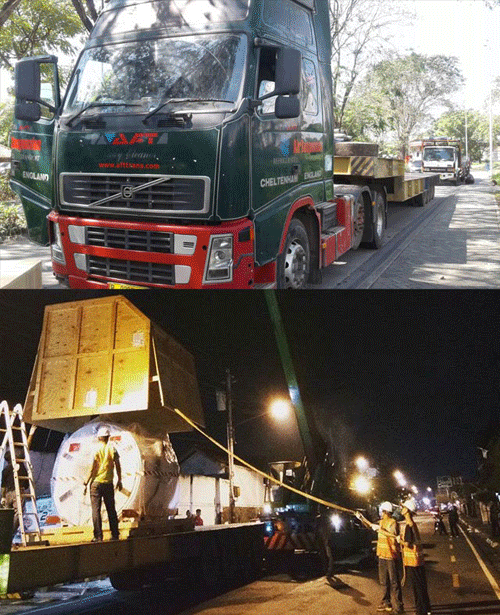
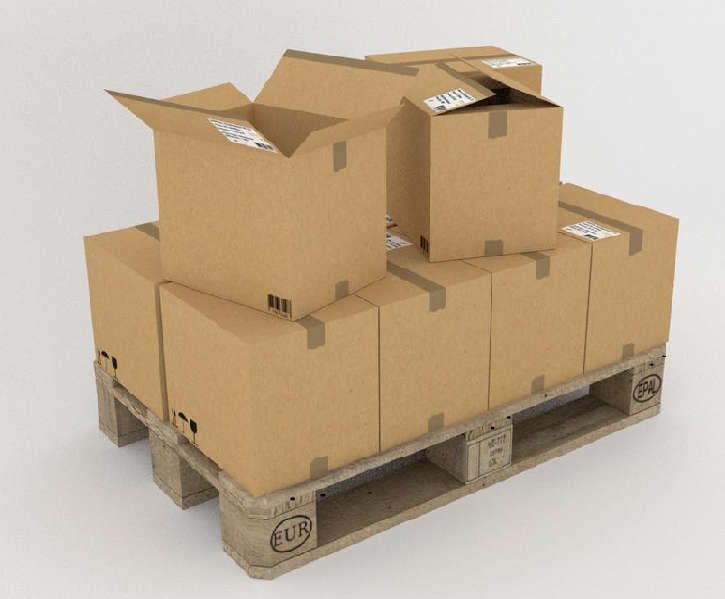
by Marketing | Jun 8, 2017 | News
 When you need to save on LTL shipping, it can be difficult for shippers to find the lowest rate that will fit their shipping needs. LTL (less-than-truckload) freight shipments involve small freight deliveries that are too large to be considered parcels, yet too small to fill an entire truckload. LTL freight shipping rates can be very complex and confusing, but third-party logistics (3PL) providers, such as Logistics Plus, can help ensure you are receiving the best possible rate. Make sure you follow these tips to save the next time you have an LTL shipment:
When you need to save on LTL shipping, it can be difficult for shippers to find the lowest rate that will fit their shipping needs. LTL (less-than-truckload) freight shipments involve small freight deliveries that are too large to be considered parcels, yet too small to fill an entire truckload. LTL freight shipping rates can be very complex and confusing, but third-party logistics (3PL) providers, such as Logistics Plus, can help ensure you are receiving the best possible rate. Make sure you follow these tips to save the next time you have an LTL shipment:
- Know exactly what your shipment is
- It is crucial to be exact when weighing and calculating the size of a shipment. Shippers should never use an estimate for the weight or size of their items because if they are wrong, carriers will charge additional fees that will only increase the cost of your shipment. Also, find out the exact and correct NMFC item number and description for your commodity and make sure it is noted on your bill of lading. Some commodities even have freight density exceptions that can also impact your rates. More carriers are enforcing bill of lading accuracy and avoiding these surprise fees is a very important way shippers can keep their total costs to a minimum.
- Choose the correct freight class
- Understanding freight classifications is important to saving money on LTL shipments. Freight classifications are based mainly on density, but other factors such as liability and handling are also considered. There is a total of 18 standard classes, and choosing the correct one is crucial to avoiding additional fees and costs. A lot of times, these freight classes are negotiable with carriers making it possible to reduce your shipping costs as much as possible.
- Maximize your pallet space
- Most LTL carriers have very specific and often complex cubic capacity rules which can greatly increase the cost of your shipment. Carriers impose minimum cubic capacity rules to effectively counter very light, fluffy shipments that take up more than their fair share of a trailer. In most cases, if a shipment consumes 750 cubic feet of space or more, and the shipment has freight density of less than 6 pounds per cubic foot, it’s not paying its fair share. In these cases, carriers will often default to a higher freight classification with minimum weight and size rules and lower (or no) discounts. To save money on LTL shipping, make sure you fully understand the minimum cubic capacity of the carrier you choose and maximize that space. Maximizing your pallet space and increasing the density of your shipment is a great way to save on LTL shipping.
- Consolidate orders
- If it is possible, try to combine small LTL shipments into one larger shipment. A lot of times, multiple small shipments will be going to the same location daily. If these shipments are consolidated into one, rates will decrease and you will save money. It is vital to understand exactly when orders must be delivered because it makes it much easier and cost effective to combine orders that will be headed to the same location. An experienced 3PL partner can help you with a complete LTL freight analysis to determine if you have any consolidation or savings opportunities.
- Use proper packaging
- Most carriers have limited liability policies, so it is important to correctly package your shipments to avoid damages. Attaching freight to the pallet by using shrink-wrap or other protective wraps can help you avoid damages to your shipments. Also, be sure to make note of fragile shipments by adding labels or signs that are easily visible on the packaging. The condition of the package upon arrival is important to all customers. If your shipment is extremely valuable, you might also consider purchasing cargo insurance for added protection.
- Determine the net cost
- Focusing on the net cost of LTL shipments is the best way to save money on shipping. There are so many factors such as weight, height, distance, delivery time, and accessorial service options that become forgotten when choosing the best rate. Considering all of these costs and combining them into one final price will give a more accurate and precise net cost of your shipment. It is important to not get caught up in just reviewing the freight or discounted rates because a lot of times, there are additional fees and charges that will factor into the final cost.
Here’s the bottom line: If you have LTL shipping needs and want to ensure that you are not overpaying, then contact Logistics Plus today!


by logisticsplus | Jun 7, 2017 | News
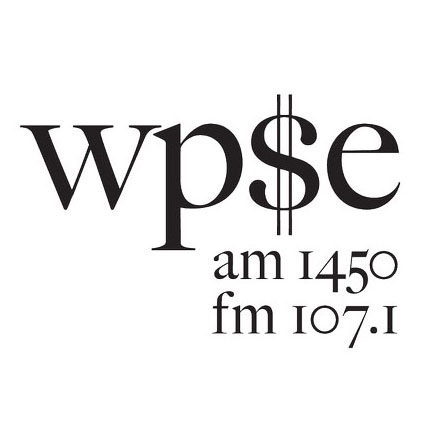 Here are some new WP$E radio interview audio clips from vice president of marketing, Scott Frederick, as well as three millennial Logistics Plus employees – Kelly Dempsey, Emily Grein and Garrett Bowden. Kelly, Emily and Garrett discuss their internships and jobs in Erie working for a cool, global company (click the images below to listen to the audio replays).
Here are some new WP$E radio interview audio clips from vice president of marketing, Scott Frederick, as well as three millennial Logistics Plus employees – Kelly Dempsey, Emily Grein and Garrett Bowden. Kelly, Emily and Garrett discuss their internships and jobs in Erie working for a cool, global company (click the images below to listen to the audio replays).
WP$E AM 1450/FM 107.1 airs Logistics Plus audio clips as part of its WP$E Partners for Business™ interview series. This is an ongoing schedule of comments by northwestern Pennsylvania CEOs, entrepreneurs, and business leaders aired throughout the day. It includes news, information, and profiles of companies, industries, and professions directed to WP$E’s business and financial audience.

Creating local jobs and opportunities within the Erie community

Kelly Dempsey from Mercyhurst leads air and ocean import team

Emily Grein from Kent State leads air exports (and even deliver herself)

Garrett Bowden from PSU Behrend works on dedicated 4PL team

Engaging local students and universities through research projects

 ERIE, Pa. (June 22, 2017) – Logistics Plus Inc., a leading worldwide provider of transportation, logistics and supply chain solutions, is proud to announce – for the second consecutive year – it has been selected by Supply & Demand Chain Executive, the executive’s user manual for successful supply and demand chain transformation, as a recipient of an “SDCE 100” Top Supply Chain Projects Award.
ERIE, Pa. (June 22, 2017) – Logistics Plus Inc., a leading worldwide provider of transportation, logistics and supply chain solutions, is proud to announce – for the second consecutive year – it has been selected by Supply & Demand Chain Executive, the executive’s user manual for successful supply and demand chain transformation, as a recipient of an “SDCE 100” Top Supply Chain Projects Award.












